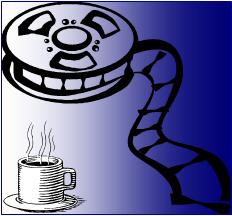

|
 |
The Best Years of Our Lives
|
Please go to the new Coffee Coaster site implemented more gracefully in Wordpress. This page @ http://brianrwright.com/CoffeeCoasterBlog/?p=2244 |
Myrna Loy ... Milly Stephenson
Fredric March ... Al Stephenson
Dana Andrews ... Fred Derry
Teresa Wright ... Peggy Stephenson
Virginia Mayo ... Marie Derry
Cathy O'Donnell ... Wilma Cameron
Hoagy Carmichael ... Butch Engle
Harold Russell ... Homer Parrish
Fred Derry: I dreamed I was gonna have my own home. Just a nice little house for my wife and me out in the country... in the suburbs anyway. That's the cock-eyed kind of dream you have when you're overseas.
Peggy Stephenson: You don't have to be overseas to have dreams like that.
Fred Derry: Yeah. You can get crazy ideas right here at home.
This is probably the third time I've seen The Best Years of Our Lives, always on Turner Classic Movies. It totally grows on you, to the point that now it's on the list of my favorite antiwar movies, and one of my favorite movies in general. Why do I say antiwar? At the time it came out in 1946, World War II was disbanding and millions of American men were returning home from the European and Pacific Theaters. I was born in 1949, and as a certified early Baby Boomer, WASP Middle Class version, throughout the 1950s and early 1960s, we were fed a steady diet of WWII films that glorified America's role in the conflict.[1]
The long and short of that emotional-perceptual experience for me—cemented by government-school civics orthodoxy and patriotic exhortations... not to mention my father's understated participation in WW2—was that America was a nation of heroic fellows and their devoted women who by their widespread wonderfulness won the war, and everything worked out for the best. They all lived happily ever after. No real psychological problems, because men are supposed to have courage and deal with trauma with a stiff upper lip. No real physical problems either, because, well, the wounded are content with their sacrifice and happy to be put on the back shelf of public attention.
The reality, of course, was a bit more depressing.
The Best Years of Our Lives gives us the reality—not in the brutally honest terms of more recent antiwar movies such as Coming Home or documentaries like Hearts and Minds, which tear the lid off Hell—at least without the deep levels of sugarcoating the Western warfare-statist propaganda machinery inflicted on us in the next decade. In any case, we learn a little about the many problems of men coming back from the killing fields of that time. [In World War I, by the way, I get the impression that war-residue problems were like sex: nobody talked about them at all, anywhere. My maternal grandfather was a victim of WWI. Having been mustard gassed, he returned to Greenville, Michigan, and farmed, but suffered a number of wretched post-traumatic symptoms.]
The movie opens with three men returning on the same flight: Air Force bombardier Fred Derry (Dana Andrews), Army sergeant Al Stephenson (Fredric March), and Navy sailor Homer Parrish (Harold Russell). They wind up on a special military transport plane because the airlines are swamped with customers and, ironically, no special accommodation is made for military men returning home. Home is Boone City (supposedly the writer's surrogate for Cincinnati, Ohio). We learn a little about them from the banter on the plane, the mood definitely jovial, to be leaving the Catastrophe behind and soon seeing their loved ones.
Fred is a young married who worked as a lunch counter attendant at a Main Street department store before enlisting and becoming an officer. His wife Marie (Virginia Mayo) hangs out at a local night club. Al is an older man who worked in the bank before the war, and saw a lot of tough action in the Pacific; he's returning to his wife Milly (Myrna Loy) and his two children, one of whom is a young woman now: Peggy (Teresa Wright). Finally, Homer was injured early in the war when his ship sank and his arms were burned off below the elbow. He has been fitted with metal-hook prostheses; he has a sweetheart Wilma (Cathy O'Donnell) in Boone City, but feels that his injuries may now be an insuperable barrier to marriage.
And then the individual life paths weave and intersect, as we find out how the principals—both the men and women—reach their, essentially moral, resolution. We forget that immediately after the war, jobs were scarce and so was housing. [Interestingly, the economy was still relatively free from government intervention, and the market did respond to those critical needs in record time.] The soldiers had to scramble to make ends meet. Women who had been working the factory jobs were let go so the men could come back in (ref. Swing Shift). It was tough, and not everyone was necessarily proud of or welcoming to the returning-troop throngs.
One particular scene—I was somewhat disappointed that its ending was such a concession to conventional thinking—occurs when a businessman sits down at the lunch counter. Fred has gotten his old job back. The businessman notices Homer, who has just come in to say hi to Fred. The businessman looks at Homer's hands and bemoans the whole rotted mess, asserting that the war was a waste, that it was only conducted to benefit a select few financial interests and (he seems to imply) the communists. But the moviemakers at least give this opponent of the war some decent lines.
Each of the men's stories is compelling: Fred finds that his wife is not the woman he married (and vice-versa), and he must make some hard choices; he suffers from terrible nightmares of combat. He has also run into Peggy Stephenson, and you can tell there is some real chemistry of the true-blue mutual long-term soulmate type here. [Teresa Wright is simply adorable as Peggy. The film, director, writer, and actors Fredric March and Harold Russell won Oscars for 1946. When you've seen BYOL a few times, you note many brilliant subtleties in the filming.] Al returns to the bank with an expanded role in the loan department, where he's torn between making loans to GIs and satisfying his fussy bank directors. And, of course, Homer deals with his handicap.[2] The women deal with their situation.
Like a good novel, there's a logic to this film that makes it flow naturally, with plenty of entertainment value, yet an honesty—at least honest for that propagandistic period—that grabs you. You face the same moral choices and dilemmas as the people in the film, winding up feeling a great sympathy for them. You even experience some understanding for the Marie character, you can see her tick and you know you've seen women like this—Marie is definitely not a "for richer or poorer" sort of babe—a million times before. Not a bad human being, simply weak. I can't say enough about how the characters playing Homer and Wilma "bring it" toward the end.
Simply memorable, and a movie for its time.
[1] Interestingly, my formative years were filled with the emerging television and movie Westerns, which tended to likewise justify and glorify white, European-ancestry opening up "the frontier" by prevailing in the North American Indian Wars.
[2] The actor Harold Russell was actually wounded in WW2 while working on a training film for the Army. The explosion destroyed his hands. Samuel Goldwyn saw him in a later Army film and decided to cast him for the role of Homer.
###
2010 November 17
Copyright © Brian Wright | The Coffee Coaster™
William Wyler | Best Years of Our Lives | Dana Andrews | Teresa Wright
 |
||||
| |